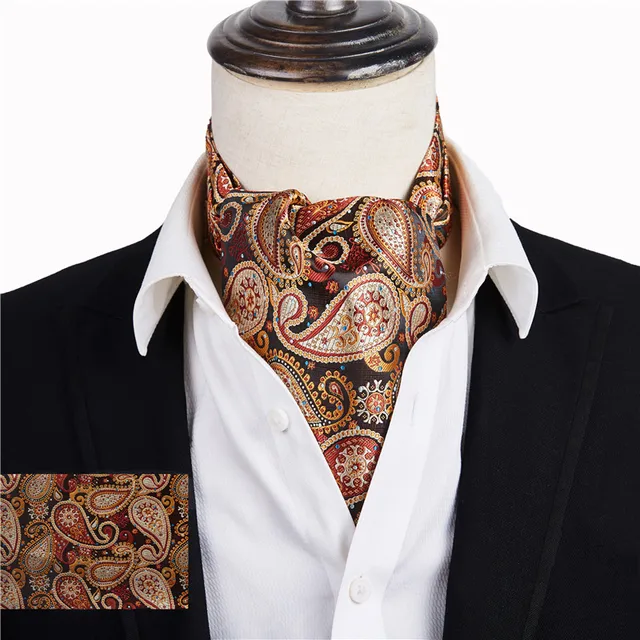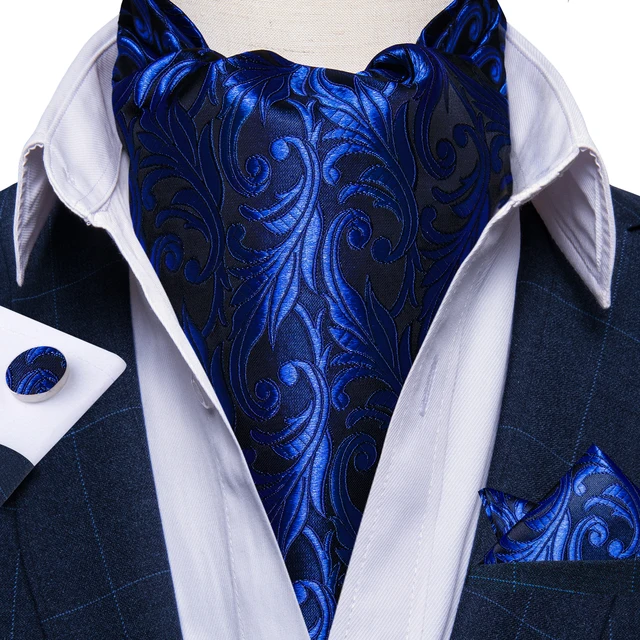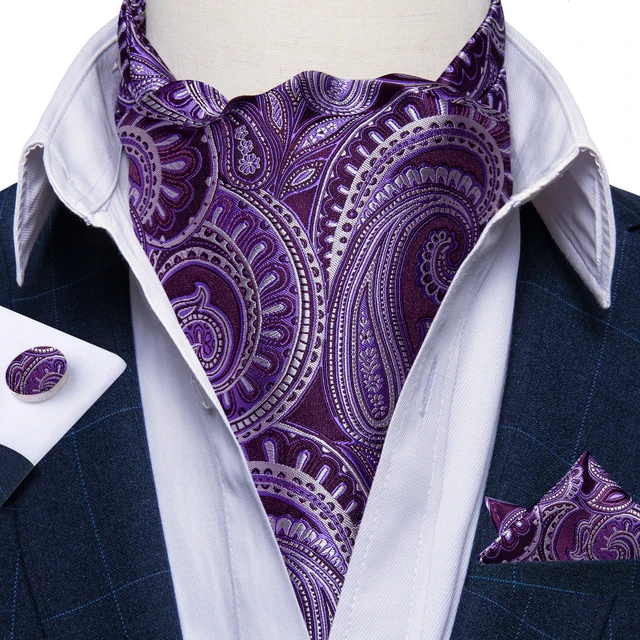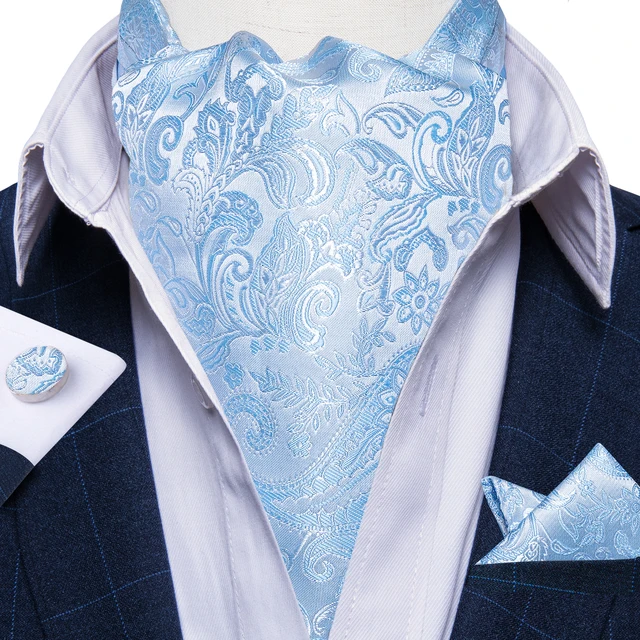
When it comes to men’s fashion, accessories can make all the difference in transforming an outfit from ordinary to extraordinary. Among these, the ascot tie stands out for its unique style, versatility, and rich heritage. Once a hallmark of British aristocracy, the ascot tie has evolved from a formal neckwear choice reserved for elite events to a fashionable staple that appeals to modern gentlemen across the globe.
Imagine stepping into a gathering wearing an ascot tie, effortlessly drawing attention with its distinctive drape and flair. This accessory not only enhances your overall appearance but also reflects your personality and taste. Whether you’re donning a tailored suit for a wedding, a smart blazer for a cocktail party, or even a casual shirt for a day out, an ascot tie can elevate your look and set you apart.
In this comprehensive guide, we’ll explore where to buy stunning neck scarf that cater to various occasions and styles, featuring exquisite options from Ascottie Lux. From classic formal designs to playful paisley patterns and elegant wedding ties, there’s an ascot for every discerning gentleman. Additionally, we’ll delve into the fascinating history of ascot ties, highlighting their evolution over the years, the benefits of incorporating them into your wardrobe, and expert tips on how to style them to perfection for any occasion. Whether you’re a seasoned fashionista or just starting to explore the world of men’s accessories, this guide will equip you with everything you need to make informed choices and embrace the art of wearing it with confidence. Let’s dive in!
The Rich History of Ascot Ties
- These have a storied history that dates back to the 19th century, representing a unique blend of fashion, culture, and social status. Initially worn by the elite at the Ascot Racecourse in England, these ties were more than just accessories; they were symbols of sophistication and a reflection of one’s standing in society. The ascot tie’s journey through time reveals not only the evolution of men’s fashion but also the shifting dynamics of social class and personal expression.
- The term “ascot tie” originates from the prestigious horse racing event held at Ascot Racecourse, established in 1711. This iconic venue quickly became a favored gathering place for the British aristocracy, who dressed to impress as they showcased their horses and indulged in the excitement of racing. It was during these glamorous events that the ascot tie emerged as a fashionable neckwear choice for both spectators and participants. Typically worn with morning coats and other formal attire, the ascot became synonymous with elegance and refinement, establishing itself as a staple of high society and a mark of distinction among the elite.
- As society evolved, so did the ascot tie. Initially a formal accessory reserved for elite events, it has transformed into a versatile piece suitable for a wide range of occasions. The 20th century saw significant changes in fashion, with designers embracing the ascot’s unique silhouette and reimagining it for contemporary tastes. They began experimenting with an array of colors, patterns, and materials, from luxurious silk to modern synthetic fabrics, allowing the ascot tie to transcend its traditional roots and appeal to a broader audience.
- This evolution led to ascot ties becoming increasingly popular among men of all styles, from business professionals to casual dressers. No longer confined to racecourses and formal gatherings, these found a place in everyday wardrobes. This shift allowed men to express their individuality and flair, making the ascot a go-to accessory for those who wanted to stand out without compromising on elegance. Its versatility means it can be dressed up or down, fitting seamlessly into various contexts, from a formal dinner to a casual brunch.
- Today, these are favored not only for their historical significance but also for the unique look and personality they bring to an outfit. Fashion-forward individuals appreciate their versatility and the statement they make. These can be worn at a variety of events, including weddings, galas, art exhibitions, and garden parties. Their ability to seamlessly transition from formal to casual settings makes them an ideal choice for men looking to elevate their style.
- The modern ascot tie is often styled with blazers, waistcoats, and even casual shirts, allowing wearers to experiment with different looks. This adaptability has solidified the ascot’s place in contemporary fashion, making it an essential accessory for any discerning gentleman. Whether paired with tailored attire or dressed down with denim, the ascot tie elevates the overall look, offering a refined touch that is both stylish and sophisticated.
- In conclusion, the ascot tie is more than just a fashionable accessory; it is a piece of history that continues to evolve with time. Its journey from the elite racecourses of England to the wardrobes of modern men reflects the changing landscape of fashion and social norms. Whether you opt for a classic formal design, a vibrant paisley pattern, or a playful print, the ascot tie is sure to enhance your wardrobe and set you apart in any crowd. As it maintains its relevance in the world of men’s fashion, the ascot tie stands as a testament to the enduring power of style and the expression of individuality.
Benefits of Wearing Ascot Ties
Versatile Style
Ascot ties are the embodiment of versatility in men’s fashion. One of their greatest advantages is their ability to be worn on a wide range of occasions. Whether you’re attending a formal wedding, a business meeting, or a casual outing with friends, an ascot tie can seamlessly adapt to your outfit. This adaptability allows you to transition effortlessly from day to night, making it a practical choice for those who value both style and functionality. The ascot tie can elevate a tailored suit just as easily as it can enhance a smart-casual ensemble, ensuring you always look polished, regardless of the event.
Distinctive Look
The ascot tie stands out for its distinctive aesthetic, offering a unique flair that sets it apart from traditional neckties. Its wide shape and the way it drapes around the neck add an element of sophistication that can elevate any outfit. Unlike standard ties that can sometimes feel generic, ascots command attention and enhance your overall appearance, making you the center of attention. This distinctive look allows wearers to make a bold fashion statement while maintaining an air of elegance, ensuring they stand out in any crowd.
Comfortable Fit
Comfort is a crucial aspect of any accessory, and neck scarf excel in this regard. The design of neck scarf typically allows for easy wear, as they are wider and can be tied loosely. This design choice not only provides comfort but also allows for a more relaxed style that doesn’t sacrifice sophistication. The ability to wear the tie without feeling constricted makes ascots an excellent option for long events or busy days, ensuring you look stylish while remaining comfortable. This combination of comfort and aesthetic appeal makes ascot ties a favored choice among fashion-conscious individuals.
Expressive Fashion
One of the most exciting aspects of it is the sheer variety available in terms of patterns, colors, and materials. From classic paisley designs to modern geometric prints, these provide an opportunity for wearers to express their personality and sense of style. Whether you prefer bold and vibrant colors or subtle, muted tones, there is an ascot tie to suit every taste and occasion. This wide array of options allows you to showcase your individuality, making these a fantastic way to enhance your wardrobe while reflecting your personal flair. The right ascot tie can become a signature accessory that adds character to your ensemble.
Suitable for All Seasons
Another notable benefit of ascot ties is their suitability for all seasons. Whether it’s a lightweight silk ascot for the warmer months or a richer, textured fabric for colder weather, ascots can be adapted to fit any climate. Their versatile nature means you can enjoy wearing them year-round, making them a valuable addition to your accessories collection. By choosing the right fabric and design, you can effortlessly integrate these into your seasonal wardrobe, ensuring you’re always stylish, regardless of the time of year.
Effortless Elegance
Wearing an ascot tie instantly elevates your outfit, adding a touch of effortless elegance. The ascot has an old-world charm that appeals to modern sensibilities, allowing you to achieve a refined look with minimal effort. Whether you’re dressing up for a special occasion or simply want to enhance your everyday style, an ascot tie brings an element of sophistication without requiring extensive styling. Its unique shape and drape create a polished appearance that can transform even the simplest of outfits into something noteworthy, making it an ideal accessory for those who appreciate refined fashion.
Perfect for Layering
Ascot ties also lend themselves well to layering, which is particularly beneficial during transitional seasons. They can be comfortably worn under blazers, jackets, or cardigans without adding bulk, allowing for a stylish layered look that maintains warmth and sophistication. This layering potential not only enhances your overall outfit but also offers versatility in styling. The ascot tie can serve as a focal point in your attire, complementing other layers while still standing out on its own. This flexibility makes these an excellent choice for creating unique and stylish ensembles throughout the year.
Where to Buy Stunning Ascot Ties
Where to Buy Stunning Ascot Ties
Now that we’ve explored the rich history and numerous benefits of it, it’s time to find the perfect one for your wardrobe. Ascottie Lux offers an impressive selection of it that cater to various styles and occasions, ensuring that you can find something that suits your needs perfectly. Here are some standout options to consider:
1. Formal Ascot Ties
For those high-stakes events where looking polished and sophisticated is a must, formal neck scarf are the perfect choice. These ties are designed to elevate your classic suit or tuxedo, adding a touch of elegance that sets you apart. Available in classic colors like navy, black, and burgundy, these can effortlessly enhance your formal attire.
- Where to Buy: Discover a selection of formal ascot ties at Ascottie Lux here. These ties are crafted to ensure you look refined and put-together for any formal occasion.
2. Paisley Ascot Ties
If you’re looking to inject a bit of personality into your outfit, these are an excellent option. Featuring intricate patterns and vibrant colors, these ties add a playful flair that can brighten up even the simplest ensemble. Perfect for both casual outings and semi-formal events, paisley neck scarf are versatile enough to suit various occasions.
- Where to Buy: Browse the vibrant collection of Click here to buy!. These eye-catching ties are a great way to express your unique style.
3. Wedding Ascot Ties
Weddings offer a fantastic opportunity to showcase your personal style, and ascot ties can be a wonderful addition to the attire of grooms, groomsmen, or wedding guests. They can be tailored to complement the overall color scheme and theme of the wedding, ensuring you look cohesive with the wedding party.
- Where to Buy: Explore the elegant options for wedding ascot ties at Ascottie Lux here. With a variety of colors and patterns available, you can find the perfect tie to match your wedding outfit and make a lasting impression.
Additional Options
In addition to these specific categories, Ascottie Lux has a wide range of neck scarf that cater to various tastes and preferences. Their collection includes ties made from luxurious materials that offer both comfort and style. Whether you’re dressing up for a formal event or looking for a unique accessory to complete your everyday look, Ascottie Lux has something for everyone.
How to Style Ascot Ties
Now that you know where to buy ascot ties, let’s discuss how to style them effectively.
Pairing with Outfits
- Formal Attire: Wear a formal ascot tie with a tailored suit. Choose a crisp dress shirt, and consider a waistcoat for added sophistication.
- Casual Looks: For a more relaxed vibe, pair a paisley ascot with a blazer and chinos. This combination is perfect for brunches or garden parties.
- Wedding Ensembles: Coordinate your wedding ascot tie with your suit and the wedding color palette. It’s also a thoughtful way to match with the bridesmaids’ outfits.
Tips for Tying an Ascot
Tying an ascot can be simple once you master the technique. Here’s a quick guide to tying an ascot:
- Drape the Ascot: Place the ascot around your neck, with one side longer than the other.
- Cross and Loop: Cross the longer side over the shorter side, then wrap it around the back.
- Create a Knot: Bring the longer side up through the loop around your neck.
- Tighten and Adjust: Pull the knot to tighten, then adjust the ascot so it sits comfortably.
- Style: You can leave it loose for a more relaxed look or tighten it for a polished appearance.
Conclusion
Ascot ties are more than just accessories; they are a statement of style and individuality. With their rich history and versatile nature, these have carved a niche in men’s fashion that continues to evolve. Whether you need a formal ascot tie for a black-tie event, a paisley option for a casual outing, or a wedding ascot to complement your ensemble, Ascottie Lux has you covered.Elevate your wardrobe with these dapper ties and express your unique style. Explore the stunning collection at Ascottie Lux and discover how these accessories can enhance your outfits for any occasion. Happy styling!



